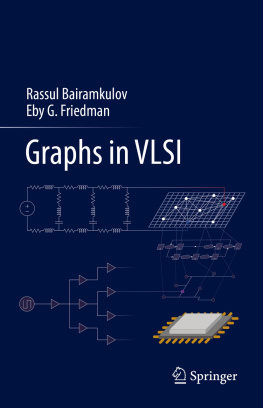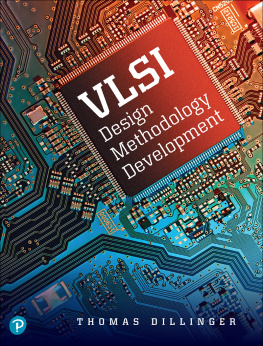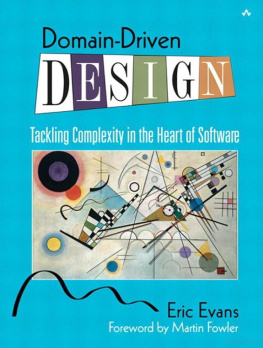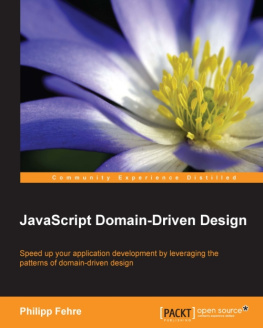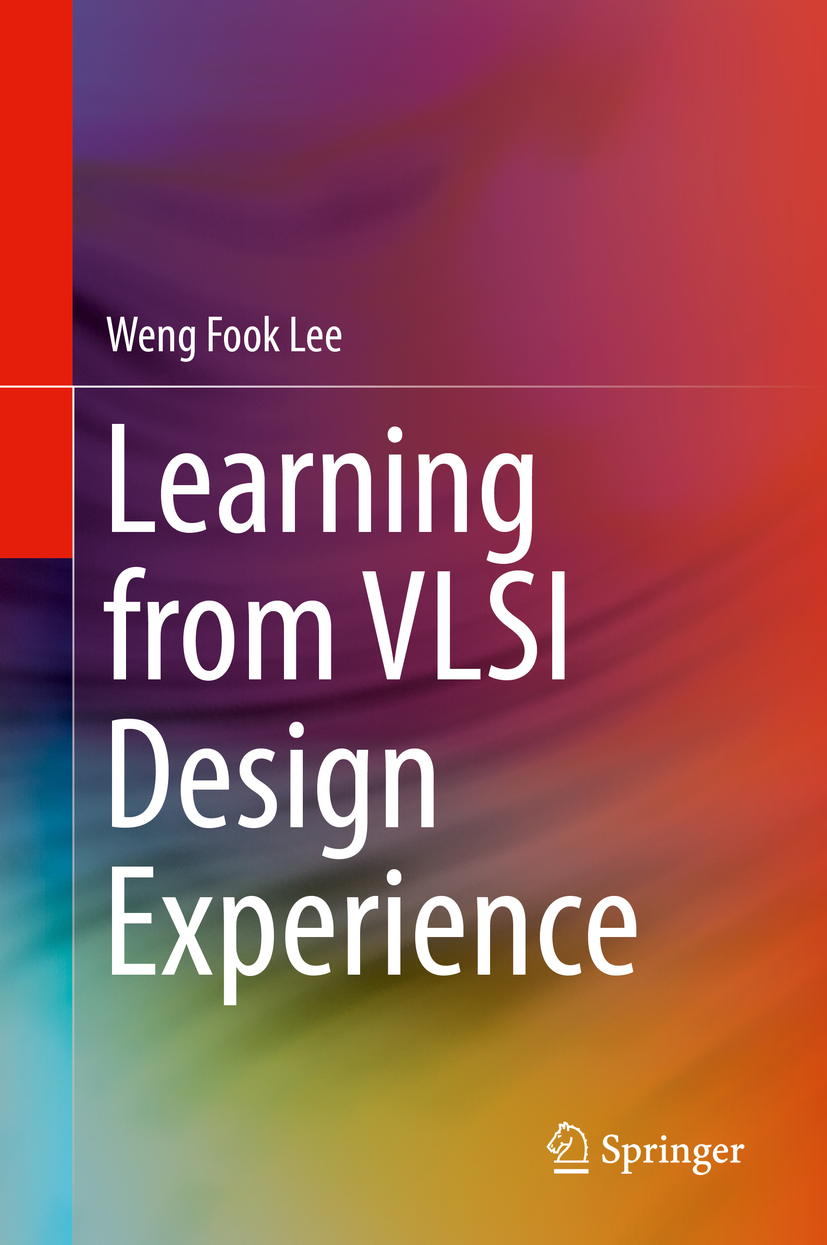Weng Fook Lee
Learning from VLSI Design Experience
Weng Fook Lee
Emerald Systems, Bayan Lepas, Malaysia
ISBN 978-3-030-03237-1 e-ISBN 978-3-030-03238-8
https://doi.org/10.1007/978-3-030-03238-8
Library of Congress Control Number: 2018960261
Springer Nature Switzerland AG 2019
This work is subject to copyright. All rights are reserved by the Publisher, whether the whole or part of the material is concerned, specifically the rights of translation, reprinting, reuse of illustrations, recitation, broadcasting, reproduction on microfilms or in any other physical way, and transmission or information storage and retrieval, electronic adaptation, computer software, or by similar or dissimilar methodology now known or hereafter developed.
The use of general descriptive names, registered names, trademarks, service marks, etc. in this publication does not imply, even in the absence of a specific statement, that such names are exempt from the relevant protective laws and regulations and therefore free for general use.
The publisher, the authors, and the editors are safe to assume that the advice and information in this book are believed to be true and accurate at the date of publication. Neither the publisher nor the authors or the editors give a warranty, express or implied, with respect to the material contained herein or for any errors or omissions that may have been made. The publisher remains neutral with regard to jurisdictional claims in published maps and institutional affiliations.
This Springer imprint is published by the registered company Springer Nature Switzerland AG
The registered company address is: Gewerbestrasse 11, 6330 Cham, Switzerland
Dedicated to my kids, my most treasured gift.
Preface
Digital systems are widely used in our daily lives. From household appliances to mobile smartphone and tablets, digital IC (integrated circuits) chips form a large part of our lives, whether we can clearly identify the presence of these IC chips in the systems we use. As technology becomes a bigger part of our lives, these IC chips increase in complexity from a few thousand transistors (Intels 4004 in 1971) to 3.3 billion transistors (Apples A10 Fusion in 2016). More and more functionalities are cramped into a single IC chip increasing its complexity. It is common to find IC chips with few million transistors and more. Such complexity increases the difficulty level for IC designers to design the circuitry for the IC chips. Digital design methodology and flow are used with Hardware Description Language such as Verilog to aid the designer to design these complex circuitries.
Chapter discusses about analog/custom design flow and digital design flow. Technical details on each step of the flow are discussed from RTL (Register-Transfer Level) coding through simulation, synthesis, auto place and route to final tapeout.
Chapter .
Clock tree synthesis which plays an important role in physical backend auto place and route is described in this chapter, describing how clock skew occurs between different clock paths. Floorplan of physical backend prior to clock tree synthesis is also discussed in Chap..
Chapter .
Differences between synchronous reset and asynchronous reset are also discussed in Chap. with examples of correct RTL coding for these reset conditions.
Latch inference is undesirable in logic design and should be avoided. Chapter discusses RTL coding conditions that lead to latch inference in a design. Examples of if-else statements and case statements that lead to latch inference are described in this chapter.
With majority of ASIC and SOC design being multimillion gates, testability of design becomes a critical issue. Chapter on handling multiple scan chains for large design.
For large design with multiple asynchronous clocks, Chap. also covers logic BIST and memory BIST and how it is used in ASIC and SOC.
Signed Verilog is important for design that requires computation for positive and negative, for example, field-oriented control logic for controlling of motor movements for complex motor such as Brushless Direct Current (BLDC) motor and Permanent Magnet Synchronous Motor (PMSM). Chapter discusses in detail the usage of signed and unsigned, with descriptions of the consequences of mixing signed and unsigned in the RTL.
State machines are commonly found in ASIC and SOC design. Chapter shows the different state machine encoding and RTL coding styles for designing state machine.
Blocking statements and non-blocking statements commonly found in procedural statements are also discussed in detail in Chap..
Chapter .
With todays complex large ASIC and SOC, it is important to ensure the RTL is well covered and verified with the testbenches. Code coverage is a method to measure the percentage of RTL code coverage by the corresponding testbenches. RTL code that are not exercised by the testbenches are identified by code coverage. Chapter also shows how designers can use the information obtained from code coverage reports to enhance the testbenches to cover the missing coverage.
All the chapters in this book consist of many pictures and diagrams to help the reader visualize and understand the design examples. Many examples are provided throughout the book to help assist the reader to understand the complications and issues presented and solutions to overcome them.
This books target audience are students learning VLSI design and young design engineers learning the art of VLSI design. This book explains design from a practical perspective based on years of design knowledge gained from experience.
Weng Fook Lee
Bayan Lepas, Malaysia
Trademarks
Pyxis, Calibre, Kronos, Modelsim, Leonardo Spectrum, DFT Advisor, Fastscan, Testkompress, Logic BIST , MBISTArchitect, and HDL Designer are trademarks of Mentor Graphics Inc.
Composer is a trademark of Cadence Inc.
Cyclone and Aria are trademarks of Altera/Intel Corp.
Acknowledgment
This book would not have been possible without the help of many people. I would like to put forward a word of Thank You to my wife for her companionship; I am looking forward to many more years of companionship on this journey of life; to my kids, for sitting with me at the study table while I write this book and they work on their school assignments; and to my besties, LP, SC, and BH, thank you for your patience in listening to my endless stories and for always being there for me.
Contents
List of Figures
Fig. 2.1 Diagram showing analog/custom design flow
Fig. 2.2 Diagram showing schematic of an inverter
Fig. 2.3 Diagram showing schematic of testbench to pump stimulus
Fig. 2.4 Diagram showing waveform from simulation
Fig. 2.5 Diagram showing physical layout of a circuit
Fig. 2.6 Diagram showing a circuit verified clean on DRC and LVS
Fig. 2.7 Diagram showing digital design flow
Fig. 2.8 Diagram showing example of a RTL Verilog code
Fig. 2.9 Diagram showing example of a Verilog testbench code
Fig. 2.10 Diagram showing example of a simulation waveform
Fig. 2.11 Diagram showing example of different sizing for inverter in a standard cell library



